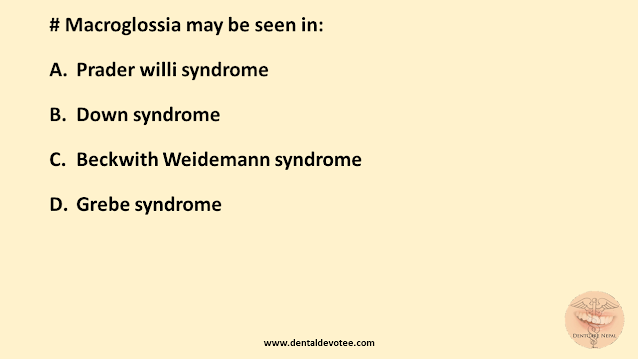# A smooth red tongue may be seen in all of the following except:
A. Vitamin K deficiency
B. Folic acid deficiency
C. Iron deficiency anemia
D. Vitamin B12 deficiency
The correct answer is A. Vitamin K deficiency.
While an iron-deficiency anemia may occur at any age, the Plummer-Vinson syndrome occurs chiefly in women in the fourth and fifth decades of life. Presenting symptoms of the anemia and the syndrome are cracks or fissures at the corners of the mouth (angular cheilitis), a lemon-tinted pallor of the skin, a smooth, red, painful tongue (glossitis) with atrophy of the filiform and later the fungiform papillae, and dysphagia limited to solid food resulting from an esophageal stricture or web. These oral findings are reminiscent of those seen in pernicious anemia.
Reference: Shafer’s Textbook of ORAL PATHOLOGY, 7th Edition, Page No: 772







